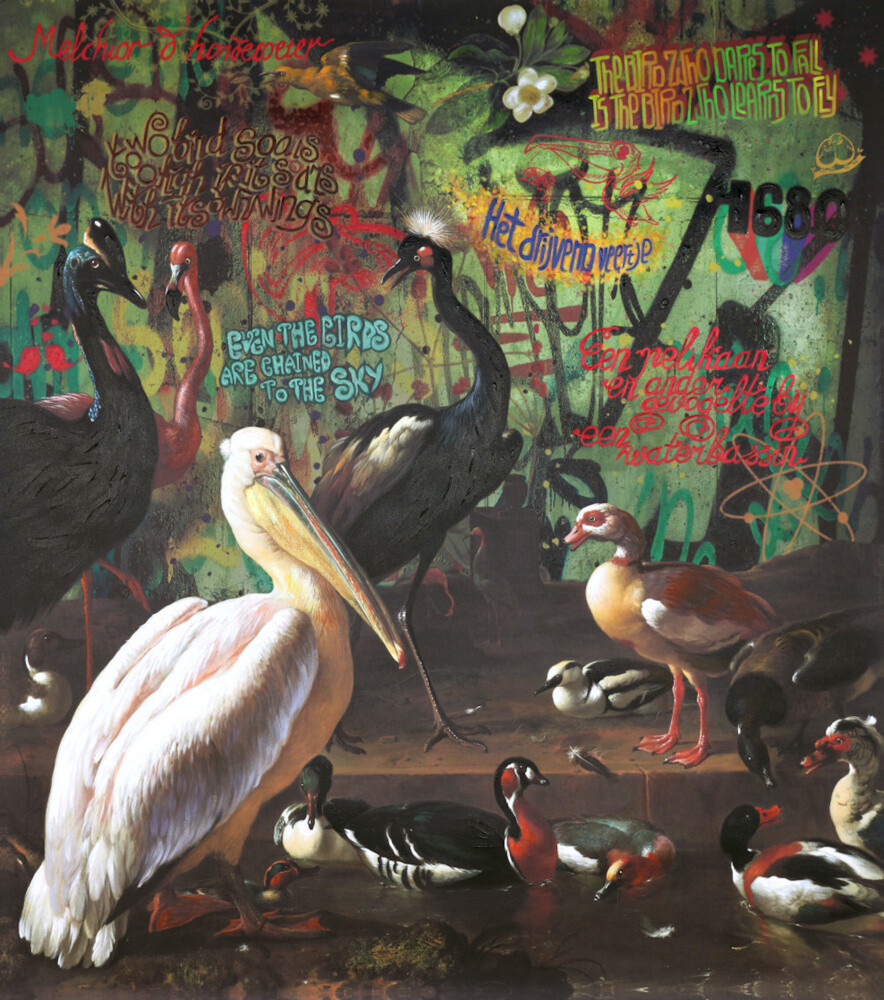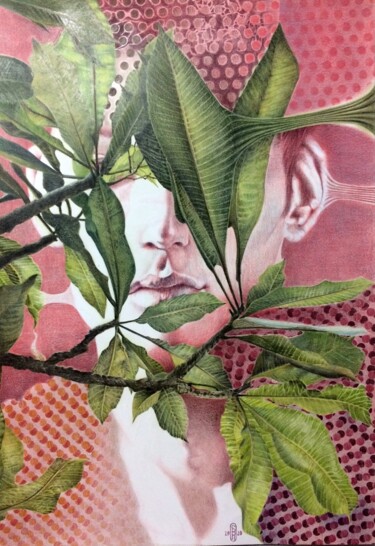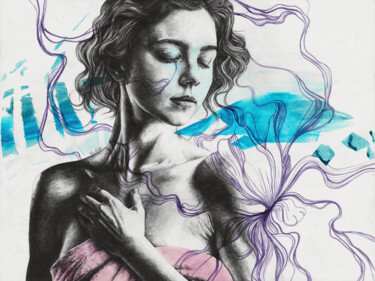How has art collecting evolved up to today?
Over the past two centuries, art collecting has reached unimaginable heights, evolving from a practice reserved for a select few into a widespread passion with significant economic impact. In the past, collectors accumulated artworks driven primarily by a love for art or to display their social status, but today, motivations have expanded to include carefully planned investment strategies. Art collecting has become an increasingly complex and structured practice, embedded in a dynamic ecosystem that involves galleries, art fairs, consultants, auction houses, and digital platforms, all aimed at facilitating the purchase of paintings, sculptures, photographs, and more.
Additionally, the advent of digital technologies has further enhanced the speed and immediacy of buying and selling processes, making artworks accessible from any corner of the world and promoting a democratization of collecting. Thanks to globalization, art is no longer just an exclusive and elite experience but a phenomenon accessible to collectors of all social backgrounds, capable of generating billions each year. What is the result? The art landscape has transformed into a complex and interconnected network where the ownership of masterpieces is not merely an act of acquisition, but an active and conscious participation in a global movement that reflects and shapes contemporary culture.
 Ira (2024) Painting by Björn Wiedemann
Ira (2024) Painting by Björn Wiedemann
But then, what advice can be given to modern collectors?
Entering the contemporary art market is undoubtedly a journey that requires dedication, knowledge, and careful planning. Buying an artwork might seem like a simple act to understand, but building a collection is a complex and rewarding challenge that goes far beyond mere instinct. A successful collection must certainly adopt a strategic approach to be unique and representative.
Looking for some practical tips?
The first step to approaching art collecting is to educate your eye: even if you’re not an expert, it’s essential to visit galleries, explore museums, and attend exhibitions to develop a trained eye and refine your tastes.
In this regard, studying historical figures and great collectors of the past can also be a source of inspiration and guidance, as these references help place a work in the context of its era and recognize its relevance. So, do you remember Lorenzo de' Medici? Well, the "Magnificent" was not just a brilliant politician but a true Renaissance influencer! His art collection was an explosive mix of works by Botticelli, Michelangelo, and ancient sculptures that now fill museums around the world. In Florence, between Palazzo Medici-Riccardi and the Uffizi, you can still feel his spirit as a serial collector: if he had Instagram today, he’d be posting selfies with masterpieces with hashtags like #ArtLover.
Without getting carried away by the grandeur inspired by emulating historical icons, remember that it's always wise to proceed with caution: don't be fooled by works that mimic styles without adding anything original! What then distinguishes authentic art? It shines for its ability to innovate and creatively interpret existing languages. Therefore, to make the right choices, you need to collect over time, thoughtfully, avoiding acquisitions driven by fleeting trends or external influences, and taking the time to get to know artists and styles, avoiding impulsive purchases that could lead to regret. In this sense, it is also crucial to understand market dynamics and its peculiarities, keeping an eye on emerging trends as well as evergreen movements and techniques.
Lastly, coming back for a moment to my dear Lorenzo, remember that a collection is, by definition, a reflection of one’s identity and must maintain the uniqueness that makes it different from any other, hence, it’s all about being true to yourself! But now, one question comes to mind: what artworks would the "Magnificent" absolutely have collected if he were a collector today?
 The Life That You Prepared Me For.. (2024) Drawing by Terziev
The Life That You Prepared Me For.. (2024) Drawing by Terziev
The Must-Haves for the Modern Collector
In building a contemporary art collection, it is essential to consider elements that not only reflect personal taste but also represent the complexity of today's artistic landscape. Among the must-have pieces for a 21st-century collection are Eco-friendly works, Abstract Art, contemporary portraits, and Street Art—elements that any art historian would deem essential for a comprehensive, exhaustive, and up-to-date collection. For each of these trends, we will explore why their presence is fundamental in a modern collection, presenting examples selected from Artmajeur's extensive catalog, described with a historical-artistic perspective.
1. Eco-friendly works: The theme of sustainability is at the forefront of global artistic and cultural discourse. In an era where environmental issues are of paramount importance, eco-friendly artworks are not just a trend but a conscious choice with symbolic, artistic, and moral value. Artists and art fairs are increasingly promoting pieces created with recycled materials, sustainable techniques, and a reduced ecological footprint. Having eco-friendly works in a collection means not only owning a piece of art but also contributing to a universal message of responsibility and respect for our planet.
 Shore-break (2018) Sculpture by Jerome Poumes
Shore-break (2018) Sculpture by Jerome Poumes
Selected work: "Shore-break" by Jerome Poumes is a unique sculpture that perfectly embodies eco-friendly art, a theme increasingly central to contemporary collecting. Made entirely from foundry scrap in solid steel, shaped and hammered by hand using traditional forging techniques, this piece is an allegory of the power and beauty of a great ocean wave. The artist's eco-responsible commitment is reflected in the exclusive use of recycled materials, a detail that underscores the importance of sustainable and environmentally respectful art.
The creation process, including shaping, arc welding, and the application of anti-rust varnish, gives "Shore-break" a powerful and dynamic aesthetic, evoking the sound of the hammer on the anvil and the play of light on metal surfaces. This sculpture not only offers a strong visual presence but also represents an act of creative transformation and regeneration, emphasizing the theme of eco-sustainability. To include a piece like this in one's collection is to own a symbol of our time, blending art, ecological commitment, and the continuous pursuit of beauty through reinvented materials.
2. Abstract art: Abstract art stands as one of the most captivating forms of contemporary art due to its ability to transcend time. Without a defined subject, works in this movement rely on colors, shapes, and lines, creating a direct dialogue with the viewer's emotions. This unique quality renders them timeless and ever-relevant, eternally resisting shifts in trends and aesthetic preferences. The inclusion of abstract pieces in a collection thus brings a sense of continuity and modernity, maintaining an energy that continues to surprise and inspire over the years. It is as if Pollock's relentless dripping still marks the passage of historical moments without losing intensity. Finally, it is well known that the success of abstract art also lies in its ability to stimulate the imagination and interpret reality in a personal and profound way, making it a must-have in any collection.
 Springdance (2024) Painting by David Hathaway
Springdance (2024) Painting by David Hathaway
Selected work: "Springdance" by David Hathaway is a piece that perfectly embodies the expressive power of contemporary abstraction, a genre essential for those aiming to build a complete and meaningful 21st-century collection. Created with acrylic on canvas, this work captures the energy of movement and the freshness of spring, embodying a vibrant dialogue between color and texture. Hathaway, whose background spans photography, retouching, and digital graphics, infuses his creations with remarkable visual depth and unique sensitivity. His experience, combined with a masterful use of light and form, makes "Springdance" a captivating example of "Abstract Impressionism." The composition, with color seemingly cascading across the canvas, invites the viewer on an emotional and sensory journey that transcends the visible, touching intimate and universal chords.
In the realm of collecting, "Springdance" turns fleeting moments into an explosion of energy and vitality, maintaining a constant dialogue with the tradition of abstraction and promoting its continual evolution. This work embodies the dynamic, unstoppable spirit of contemporary art, renewing its language and confirming its timeless relevance.
3. Contemporary portraits: Portraits are a cornerstone of art collecting, a genre that gained prominence from the 18th century as a symbol of prestige and personal representation. Today, this tradition is carried forward with new techniques and perspectives that reflect the complexity of the contemporary world. Each piece in this genre is renowned for its ability to tell a unique story, reflecting the multifaceted nature of human identity and capturing the essence of modern society. The power of the portrait lies in its capacity to capture the essence and emotions of an individual, creating an intimate and direct connection with the viewer and narrating a story through expressions, postures, gazes, and surrounding details that transcend time and circumstances. Owning a portrait means going beyond individual boundaries, accessing a reflection of shared experiences, emotions, and universal moments. These works become mirrors of the human condition, capable of evoking empathy and understanding, speaking to all of us and celebrating our shared presence on Earth.
 Quattro - Il quadrato (2024) Painting by Paola Geranio
Quattro - Il quadrato (2024) Painting by Paola Geranio
Selected work: "Quattro - Il quadrato" by Paola Geranio is a significant example of contemporary portraiture that explores human identity and emotion through an innovative visual language. The close framing of the face and bold use of color demonstrate the artist's ability to merge figurative elements with abstract touches, creating a piece that captures attention and prompts reflection. The features of the young woman depicted, authentic and current, reflect the image of the modern girl, making the painting immediately relatable and close to the viewer’s everyday experience. The use of color, with energetic and layered brushstrokes, infuses the work with vitality and depth, making each stroke part of the visual narrative the artist aims to convey. "Quattro - Il quadrato" thus becomes an essential work for those who seek a collection that explores and documents the contemporary human condition, maintaining a link with tradition while projecting toward new and unprecedented interpretations.
4. Street art: Street art has emerged as the most significant artistic revelation of our century, propelled into the spotlight by iconic and provocative artists like Banksy. Its ability to tackle social and political themes with a direct and accessible language has captured the attention of critics and collectors, establishing it as a fundamental element in contemporary art collections. More than just an urban form of expression, street art is a cultural phenomenon that challenges traditional norms and redefines the boundaries of art itself, transforming streets into open-air museums and democratizing access to artistic expression. The media celebrates it for its provocative nature and social impact, recognizing its influence and its ability to spark meaningful debates. Owning a piece of street art means holding a fragment of modern history, an emblem of resistance and innovation, a symbol of art’s power to speak to everyone, everywhere.
 The bird who dares to fall is the bird who learns to fly (2022) Painting by Wilhem Von Kalisz
The bird who dares to fall is the bird who learns to fly (2022) Painting by Wilhem Von Kalisz
Selected work: "The bird who dares to fall is the bird who learns to fly" by Wilhem Von Kalisz is a piece that synthesizes the dialogue between past and present, merging 21st-century techniques with the examples set by the old Northern European masters. This composition, which combines acrylic painting, oil, and digital printing, explores the concepts of freedom and challenge through a striking image of birds accompanied by enigmatic and symbolic phrases in an urban style. The result is an intertwining of the detailed realism of fauna and the overlay of elements typical of street art, such as graffiti and tags, which add an additional layer of narrative that is decidedly more contemporary and provocative.
Von Kalisz's ability to masterfully blend traditional aesthetics with the language of street art makes this piece essential in a modern collection, as it reflects the complexity of our era: a moment when the ancient and the contemporary merge, giving rise to new forms of expression. Regarding the meaning of the painting, it serves as a tribute to the idea that the courage to challenge one's comfort zone and embrace risk is essential for growth and discovering one's true essence. The aim is singular: to invite reflection on the human condition and the constant search for existential meaning in an increasingly chaotic and "graffitied" world.


 Olimpia Gaia Martinelli
Olimpia Gaia Martinelli















































